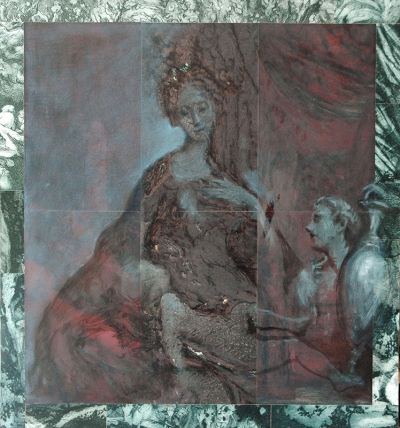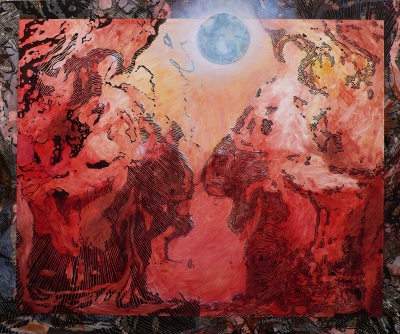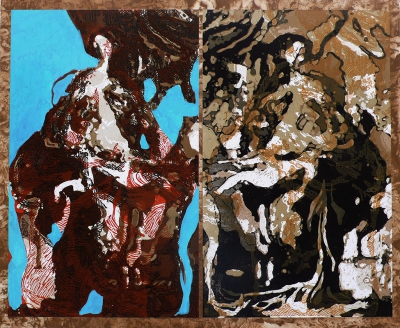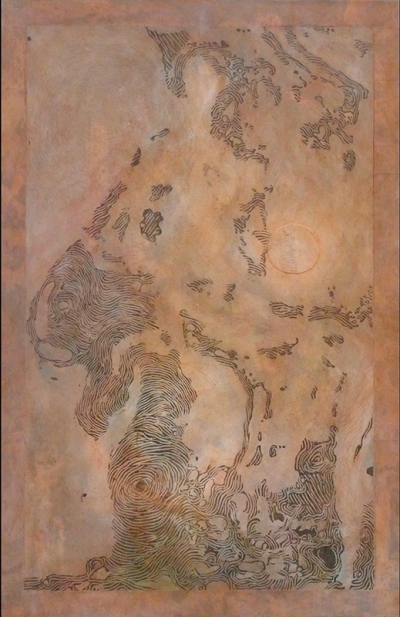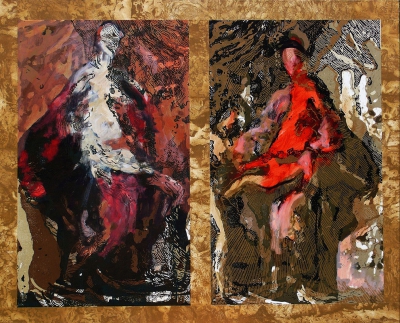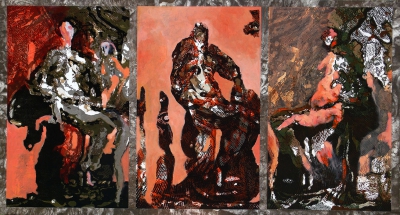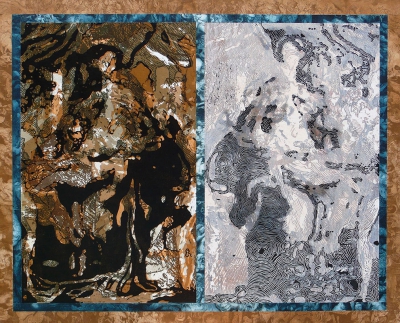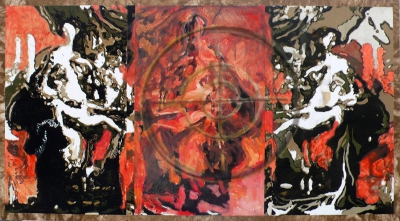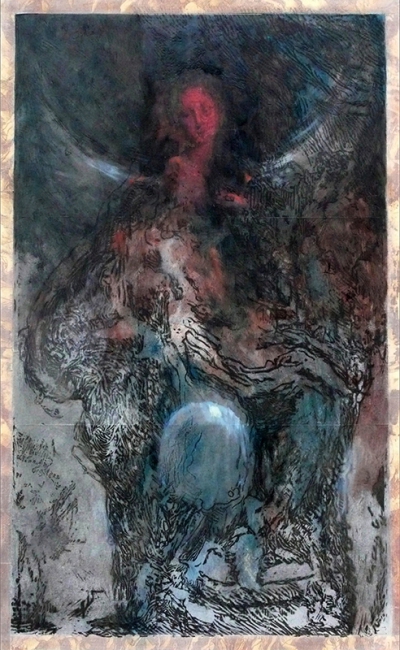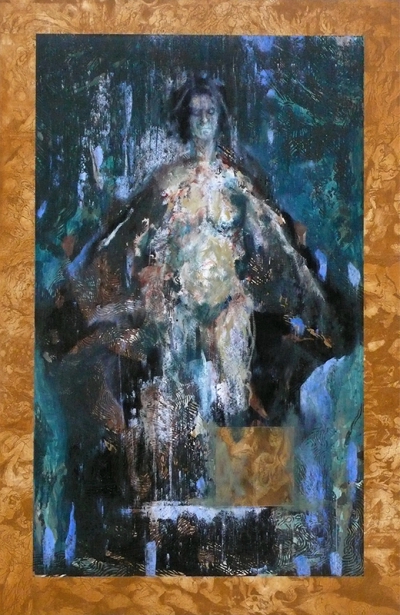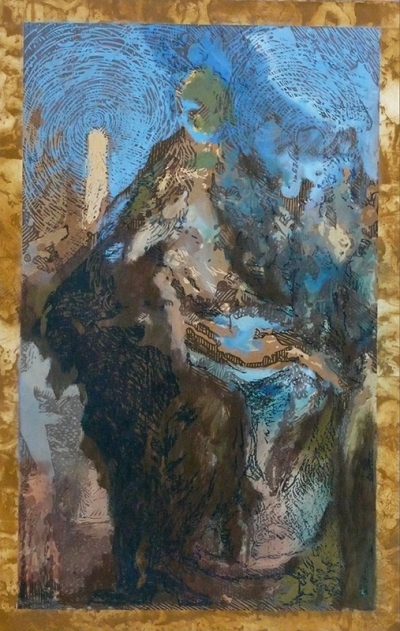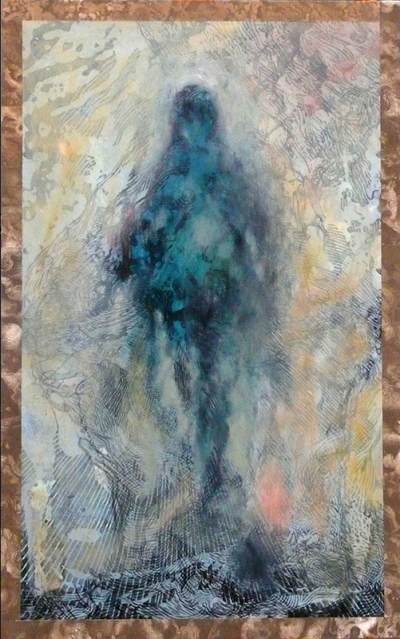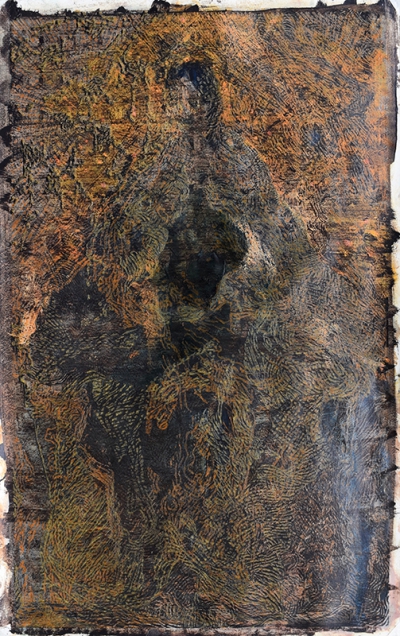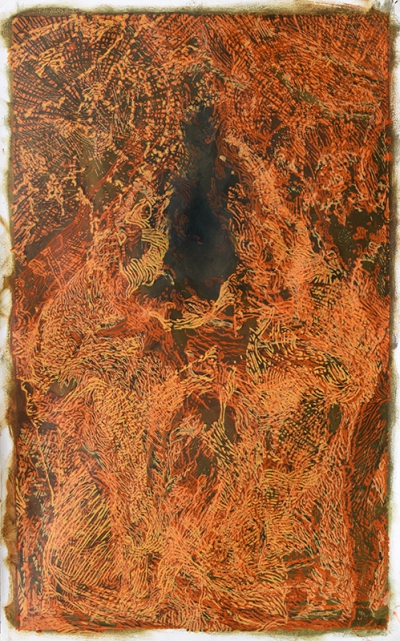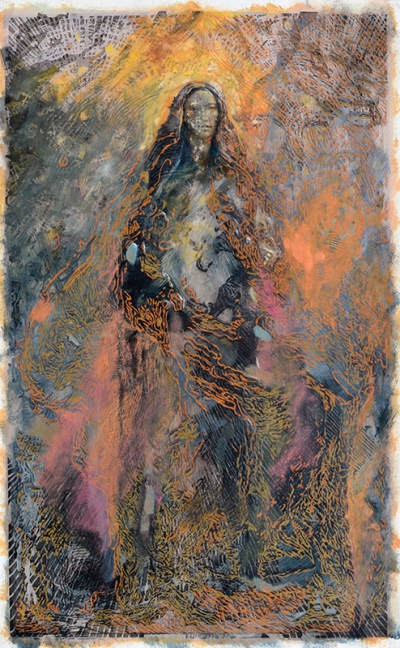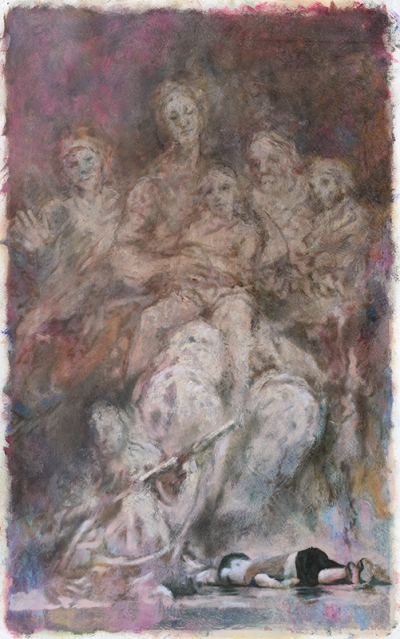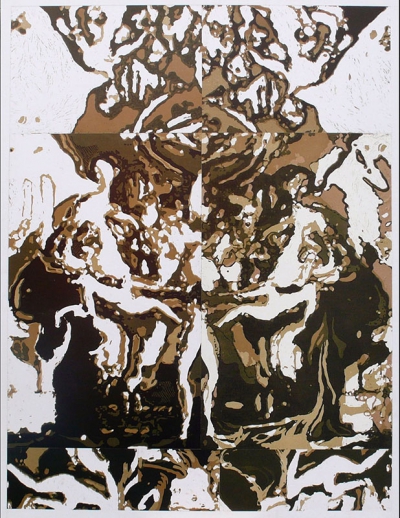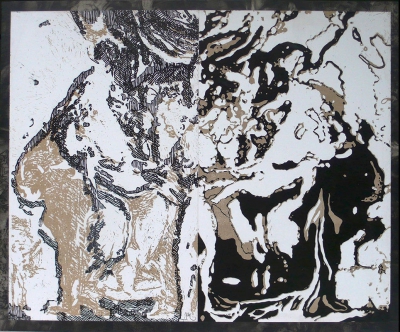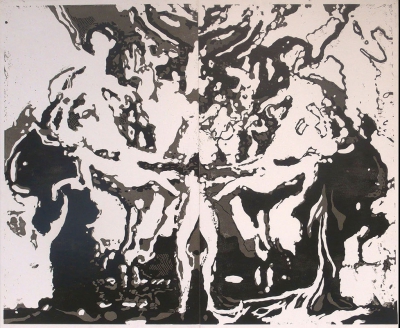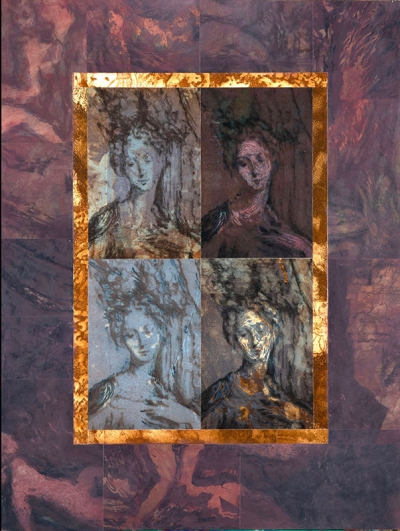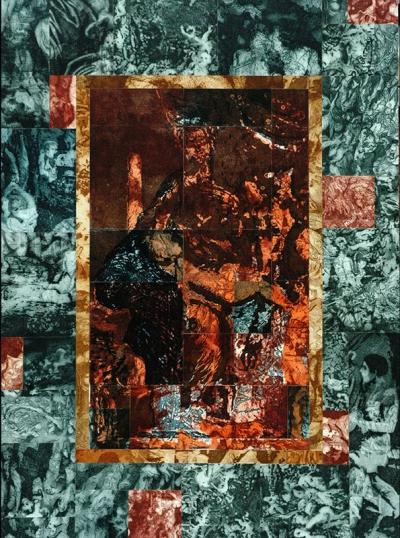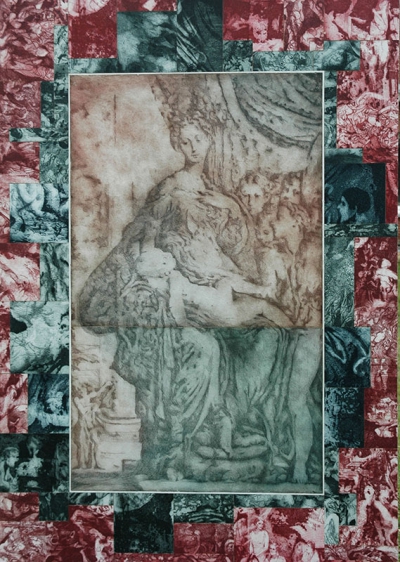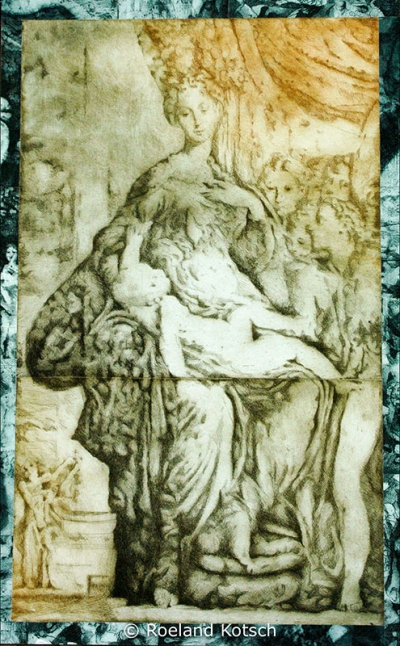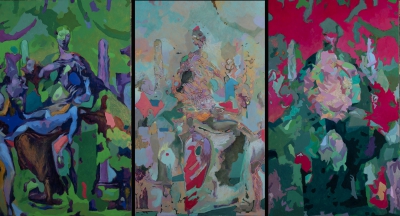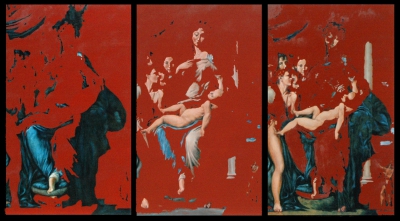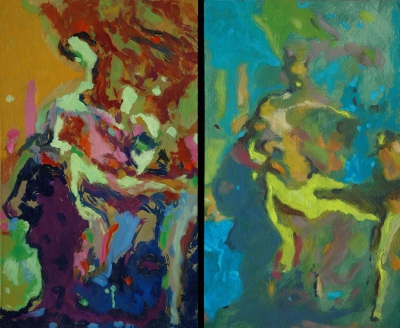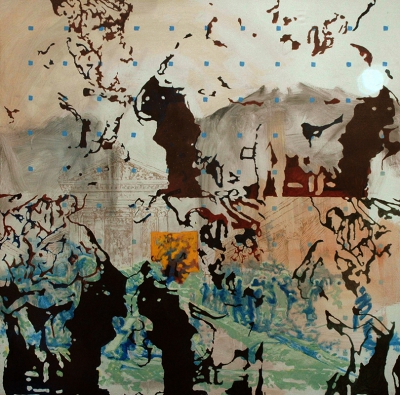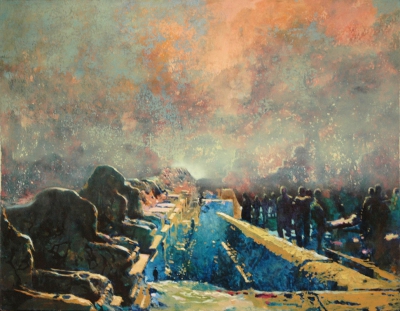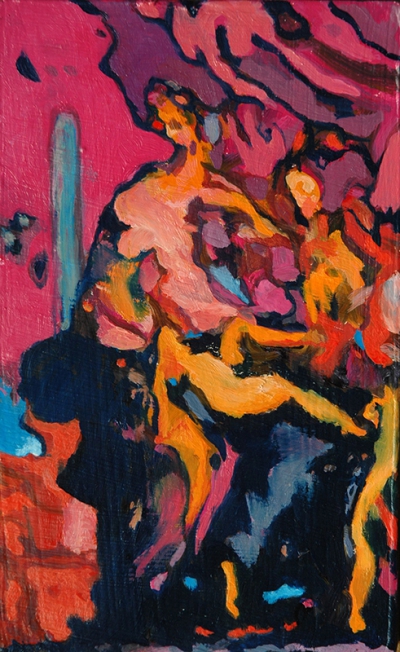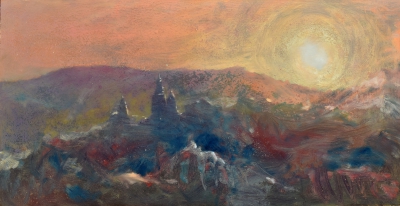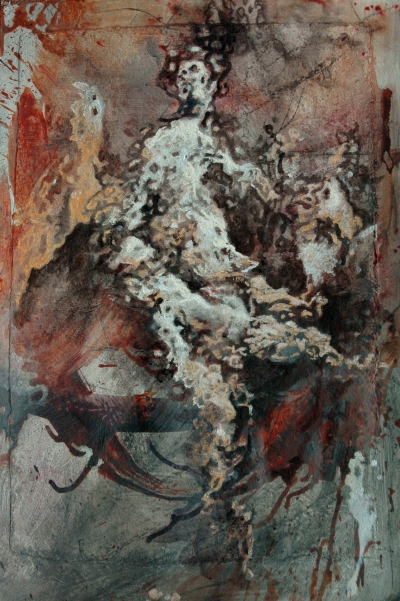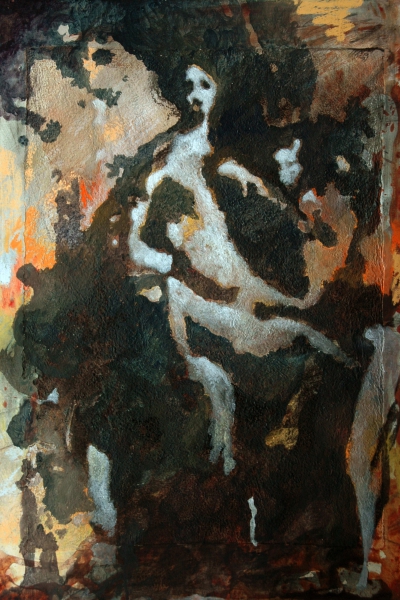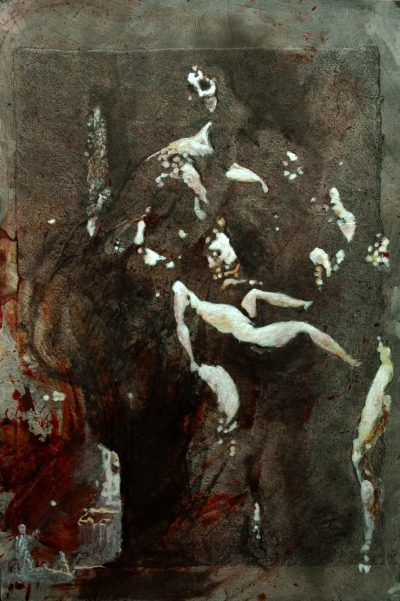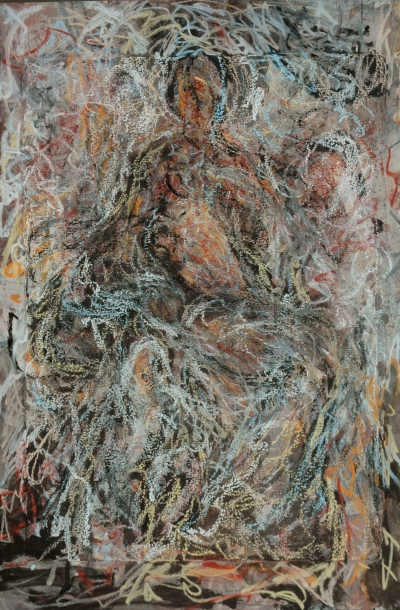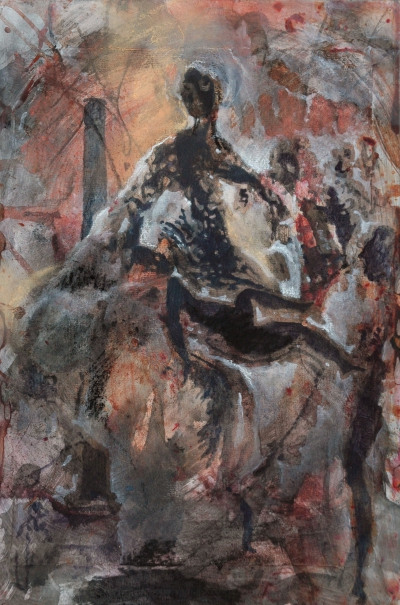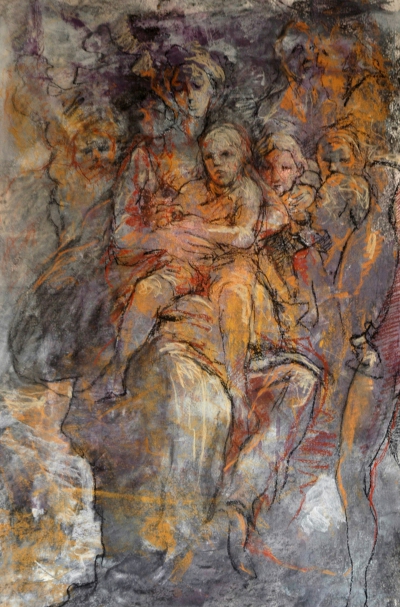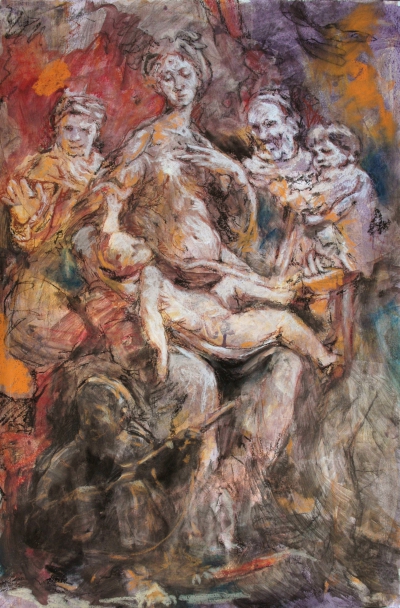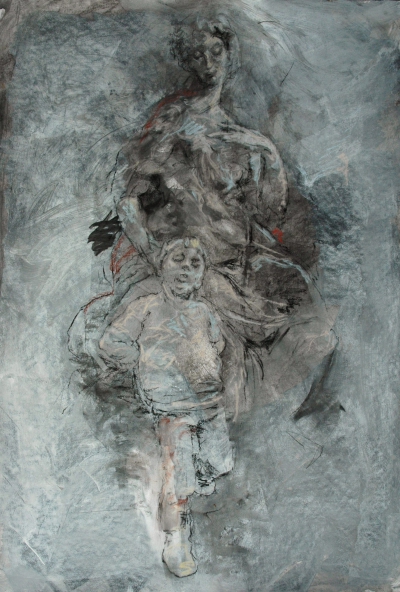Perhaps women's emancipation is - and will continue to be - the single most important change in our civilization. And this is probably also the case outside Europe. After ten thousand years of patriarchy, that's really something. It is not just a legal or social matter, this is about a revaluation of values too. My search for the mother goddess conveys this theme to the domain of visual representation and the slippery ice of religion. Traditionally yet the connection between imagery and religion has been strong, but for me there is also a personal, spiritual quest involved, which I hope will be able to inspire others too.
The narrative of Isis is possibly the most distant echo of the 'primeval goddess'' legend. Sister and wife of Osiris, this mythical figure offers a healing rejoinder to male violence. Perhaps she is closer to the concepts of origin and creation: cyclic processes, fuzzy forms stemming from hidden places, gradually taking shape. The story of Isis is an extension of my earlier Orion project, taking it one step down the road to find a central spot for that feminine principle within our notion of the divine. Even though we may feel little need for a religious foothold, the paradigms underlying faith live on in the way we perceive the world. If we want to widen them, let's start at the beginning.
Because I am the first and the last.
I am the revered and the scorned.
I am the whore and the saint.
I am the husband and the virgin.
I am the mother and the daughter.
I am my mother's arms.
I am the barren one, and many are my children.
I am the well-wedded and still single.
I am the one giving birth
and the one lacking offspring.
I am the consolation of contractions.
I am the wife and the husband
and it was my husband who created me
I'm my father's mother.
I am the sister of my husband
and he's my rejected son.
Always respect me,
because I'm the ignominious
and the beautiful one.
Hymn to Isis (3rd - 4th century B.C., found in Nag Hammadi)
My own endeavor originates in a sixteenth century representation: the Madonna with the Long Neck (Parmigianino). A thankful starting point, because it is mystifying, ambiguous, scandalous and surprisingly beautiful. I made digitally processed reproductions of the painting, and then I let the magic of lino and oil paint loose on it. Obsessively I pursued this one theme, as a challenge to go on exploring the selected means of expression in quite various ways. As this concerns a religious representation, creating a large number of images of the same figure over and over again made sense to me, guiding me gradually to new interpretations. This kind of evolution in the domain of figurative representations can also be found in Christian, Buddhist and Hindu iconography.
I explored a wide variety of possibilities in the field of drawing, graphics, painting and digital image processing. Sustained concentration on this one Madonna figure made me extend my boundaries in terms of techniques and helped me further develop them artistically. Committed to solid craftsmanship, I was looking for a synthesis of tradition and innovation, averse to and at odds with current developments in contemporary art. This synthesis also includes a highly personal combination of graphics and painting. The upshot of this visual adventure is a wide range of images, which are classified here in four sets: drawings, pure graphics, painting and a mixed form, in which I have combined graphic work with oil paint.
And who then finally is Isis? I wouldn't know.
“ I do not know who that woman is, whether she ever lived and whether I ever met her (…). But I do know that every line and every book I have written, every genre I have explored, was an attempt to find her. (…) Ever since, I have the notion that all my work has been nothing but a pretext and a means to meet her.” Sándor Márai.
